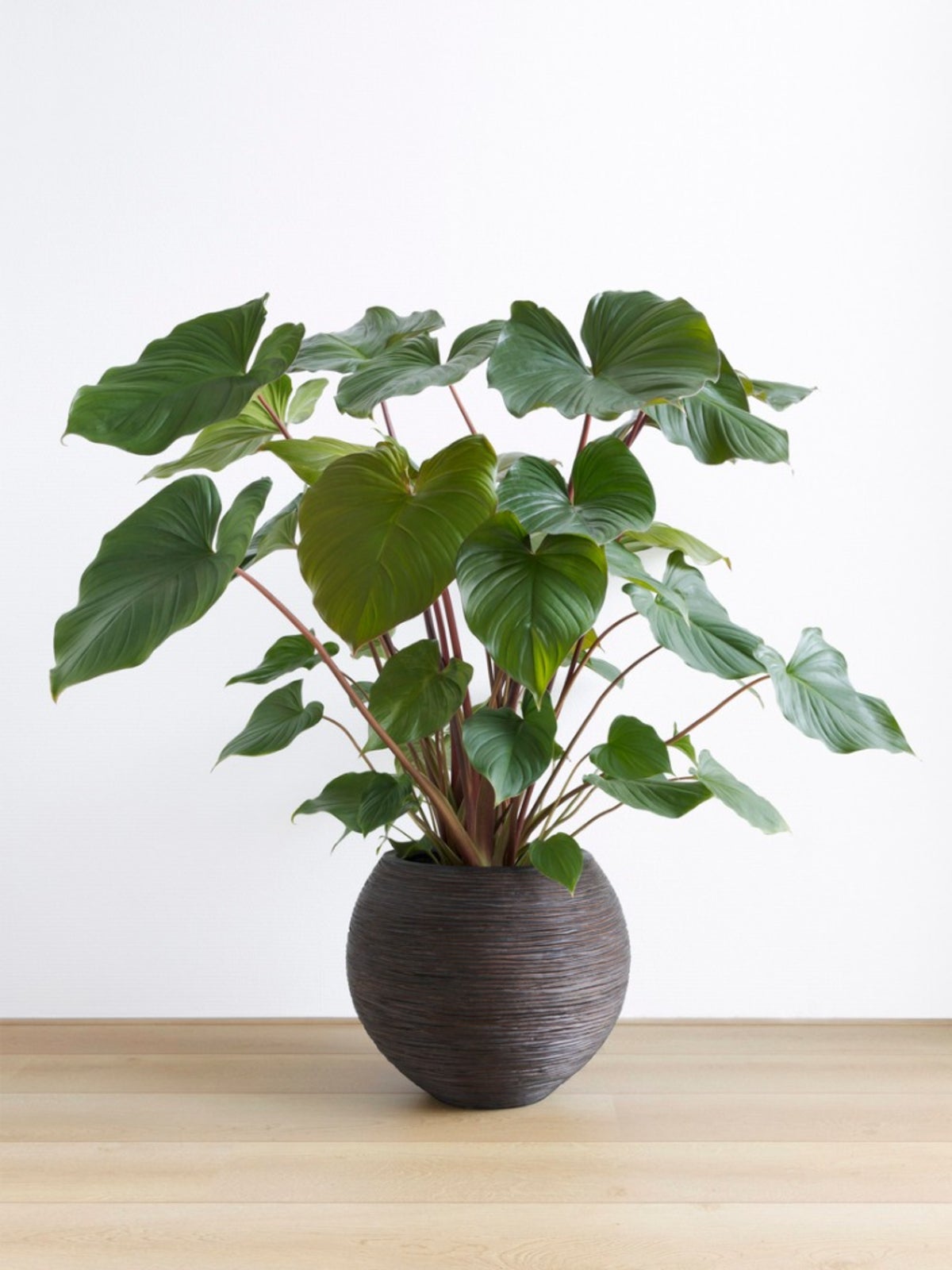Homalomena Houseplants: How To Grow Homalomena

A recently introduced plant, Homalomena houseplants are the darling of homeowners and interior landscapers alike due to their ease of care, disease resistance, and tolerance of low lighting conditions and stress. Keep reading to learn more about growing Homealomena plants.
What is Homalomena?
What is Homalomena? Homalomenas are tropical to subtropical native plants found in such humid climes of Columbia, Costa Rica, Borneo, Java, Sumatra, Malaysia, and the Philippines. Nearly 135 species of Homalomena plants can be found in the rainforest floors of southern Asia east to Melanesia. These indigenous florae are among the more than 100 species of tropical plants in the aroid family of Araceae. Through Central America and northern South America, there are 12 additional species of growing Homalomena plants alone. Homalomena foliage and stems run the gamut from deep greens to reds, burgundies, and copper tones. Appearing to be waxen, the leaves are of a heart or semi-heart shape speaking to the common names for Homalomena: “queen of hearts” or “shield plant.” Homalomena houseplants have attractive, but very few, finger-like blooms.
Varieties of Homalomena Houseplants
Although there are a multitude of wild species of Homalomena plants, few are available commercially and for ornamental purposes. Primarily hybrid species can be purchased, selected or bred for their outstanding features. These may include:
- ‘Emerald Gem' - has dark green, glossy and heart shaped leaves
- ‘Purple Sword' - awash with green and silver spotted foliage and an underside of burgundy
- ‘Selby' - has light green spotted leaves edged with darker green
- ‘Pewter Dream' - as suggested has a powdery gray sheen on its green foliage
- ‘Lemon Glow' - sports oval leaves of a vibrant greenish yellow
How to Grow Homalomena
Akin to one of their relatives, the Philodendron, Homalomena plants are tropic-loving plants. So the answer to “how to grow Homalomena” is pretty obvious in regard to its temperature requirements. Homalomena care as a houseplant will require an optimal temperature of between 60 and 90 degrees F. (16-32 C.). Tropical indeed! That said, growing Homalomena plants can withstand temperatures as low as 40 degrees F. (4 C.) with little to no damage. Homalomena houseplants do well in medium to low light exposures but truly thrive in medium light conditions. An over abundance of sun can scorch the foliage, causing burnt spots on the leaves. Homalomena care will also include a regular watering schedule. Homalomena plants do not like to be dry, nor do they like to be sitting in water. Saturate the soil and be sure to provide good drainage. Fertilize regularly with a liquid plant food used at the strength recommended by the manufacturer. Soil for Homalomena houseplants should be semi-porous, peat based (but not too dense), and containing some sand and plenty of humus organic matter.
Additional Homalomena Care
Again, Homalomena care dictates a moist but not waterlogged soil. Dry soil will turn the foliage yellow and spartan. Low humidity will cause browning along the leaf edges. Homalomena are an evergreen when temperatures are warm enough to avoid frost but if temps drop below 40 degrees F. (4 C.), the foliage of growing Homalomena plants may rot or yellow. Lush, tidy, clumping plants, Homalomena houseplants are a relatively easy indoor plant to grow with lovely, sometimes exceptional, leaf shapes and colorations.
Gardening tips, videos, info and more delivered right to your inbox!
Sign up for the Gardening Know How newsletter today and receive a free copy of our e-book "How to Grow Delicious Tomatoes".

Amy Grant has been gardening for 30 years and writing for 15. A professional chef and caterer, Amy's area of expertise is culinary gardening.
-
 Creative Ideas For Plant Containers: 7 Ways To Save Money And Add Charm To A Garden
Creative Ideas For Plant Containers: 7 Ways To Save Money And Add Charm To A GardenIf you are looking for great ways to add personality to your container gardening – and even save yourself some money – then try these creative ideas for plant containers
By Mary Ellen Ellis
-
 How To Make A Bouquet Garni Or Herb Bundle For Cooking
How To Make A Bouquet Garni Or Herb Bundle For CookingIf you’re a great cook, you may have made an herb bundle before. If this is a new idea, learn how to add sparkle and interest to your dish with a bouquet garni.
By Amy Grant